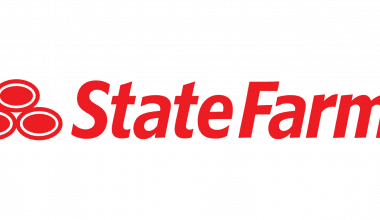America First Insurance is a regional insurance company that offers a variety of personal and commercial insurance products. The company is known for its competitive rates and strong financial strength. America First Insurance is also accredited by the Better Business Bureau and has a good customer service reputation.
In this review, we will take a closer look at America First Insurance, including its coverage options, rates, discounts, and customer service. We will also discuss what customers are saying about the company and its claims process.
First Things You Should Know About America First Insurance
Quotes are available from America First via phone or in-person meetings with one of their agents. Furthermore, America First has several regional offices to better serve its clients.
Six states are home to America First’s agents:
- Texas
- Oklahoma
- Kansas City
- Missouri
- The Ark
- Louisiana
Interested business clients can look for an agent by inputting a street address, zip code, and search radius. America First has independent agents spread across the six states.
However, consumers wishing for individual coverage must speak with a different carrier and agent, as America First representatives are limited to providing corporate insurance products.
America First Insurance Coverage
While we can’t always stop the unexpected from happening, there are instances when we can shield our families and ourselves from the worst financial consequences.
The proper kind and quantity of insurance depends on your unique circumstances, including children, age, way of life, and job advantages.
Most financial experts advise having life, health, car, and long-term disability insurance.
So here is a list of America’s first insurance coverage:
#1. Car insurance
Driving without insurance is prohibited in almost all states due to the requirement for coverage. The kinds of coverage you must purchase and the minimum amount required by your state are mandated. However, having more insurance than necessary is advisable to prevent being underinsured in a severe collision—especially if you’re at fault.
These are the several kinds of auto insurance you can get to cover property damage and injuries sustained in an accident.
Liability Protection
If you cause an accident, this coverage covers other people’s property damage and injuries. If you are sued due to the accident, it also protects your legal defence and any settlements or judgments up to the policy amount.
It might be tempting to purchase the bare minimum of coverage required by your state. Still, it’s often a good idea to purchase adequate liability insurance to cover your potential losses in the event of a lawsuit.
The national average for bodily injury claims is approximately $20,000, as LexisNexis Risk Solutions spokesperson Adam Pichon stated. Insufficient liability coverage may result in a court judgment and even wage garnishment to make up the difference between what your insurance covers and what you owe.
Collision and Comprehensive Insurance
Together, these insurance policies will cover any damage to your car. Comprehensive insurance protects against theft, damage from fire, hail, floods, falling items (such as tree branches), and collisions with animals (such as running over a deer). Even if you were at fault, collision insurance covers damage to your car from hitting a structure or pole.
These add-on coverages might be helpful, mainly if your automobile is newer or you don’t have the money to fix or replace it. Your lender may mandate that you carry both collision and comprehensive auto insurance if you have a loan or lease.
According to Pichon, collision claims are also on the rise, with an average cost of $6,000 and more than 20% of vehicles totaled following an accident. “You are taking a big risk not having coverages on your car because the cost to replace your current car has increased significantly.”
Coverage for Underinsured and Uninsured Drivers
This policy covers your and your passengers’ medical costs if another driver strikes your car while driving without insurance or with insufficient coverage. It can also pay for your discomfort and missed income.
Protection Against Personal Injury (PIP)
PIP assists in covering medical costs for both you and your passengers, irrespective of who caused the accident. Additionally, it can pay for any lost wages and services, like child care, that you cannot perform following an injury. In certain states, PIP is mandatory, while in others, it is voluntary.
Medical Payments Coverage (MedPay)
Regardless of who was at fault, MedPay can pay for your medical bills and the costs of your passengers if you are injured in an accident. Typically, MedPay is offered for sale in modest denominations of $1,000 to $5,000.
#2. Health Insurance
You can acquire health insurance through your job, the federal health insurance marketplace, or privately by contacting health insurance companies directly or through a health insurance agent and purchasing insurance for yourself and your family.
According to data from the Centres for Disease Control (CDC) and the National Centre for Health Statistics, just 9.2% of Americans lacked health insurance in 2021. The other individuals were covered by government-subsidized programmes such as Medicare and Medicaid, veterans’ benefit programmes, and the federal marketplace created under the Affordable Care Act.
Over 60% of people obtained coverage through their employers or the private insurance marketplace. Even a small policy is preferable to none if your finances are extremely tight. If your income is modest, one of the 80 million Americans who qualify for Medicaid may be you.
You can qualify for subsidised coverage under the federal Affordable Care Act if your income is moderate but doesn’t allow you to afford insurance coverage.
#3. Life Insurance
It’s critical to acquire the best life insurance for your circumstances if you are the primary provider for anyone. According to LIMRA, a research organisation supported by the insurance industry, 44% of American households would experience financial difficulties within six months following the death of the major wage earner. For 28%, it would happen in just one month. One option for replacing your income in the event of an untimely death is life insurance.
Term and permanent life insurance are the primary categories into which life insurance policies often fall.
Term Life Insurance
With term life insurance, you can fix rates for a specific period, such as 10, 15, 20, or 30 years. Your insurance premiums are level during this time. You can renew the policy annually after the term period expires, but the cost will increase each time.
Term life insurance might be viable if you want to pay for a specific financial commitment, such as college expenses or debt. The least expensive kind of life insurance is often term life insurance.
Permanent Life Insurance
Lifelong protection may be available with permanent life insurance. Permanent life insurance provides a cash value component in addition to the death payout. If the cash value increases, you can borrow money from it or withdraw cash. And when you cancel, you can claim the policy’s cash value (less surrender charges).
If you want to provide a death benefit for someone who will be financially dependent on you for an extended length of time, or if you want to develop cash value to supplement retirement funds, think about getting permanent life insurance. Term life insurance is less costly than permanent life insurance.
#4. Household Insurance
There is no state statute requiring homeowners insurance, unlike auto insurance. To safeguard their interest in your property, your lender typically wants coverage if you borrowed money to buy your house. In this manner, you can reconstruct your home in the event of damage or destruction and won’t be able to default on your mortgage.
If anything damages or destroys your home and you don’t have home insurance, you’re still liable for the price of repairs or replacement. This is true even if you paid for your property outright without a mortgage. Purchasing a house insurance policy is sage.
Multiple forms of coverage are bundled together in home insurance policies, including:
Dwelling Coverage
Dwelling coverage shields your home’s structure from unforeseen calamities like fire, wind, theft, or vandalism, from your roof to your floors. This coverage also covers replacing or repairing structures attached to your home, like a deck or garage. The amount of your dwelling coverage needs to match the price of rebuilding your home.
Coverage for Personal Property
This coverage covers your goods, including clothing, appliances, and furniture. Explosions, fire, and theft are among the issues addressed. Personal property coverage is often limited to a percentage of your home coverage, usually between 50% and 70%. If you require more coverage, you may purchase it.
Liability Protection
Liability insurance covers unintentional injuries or property damage you cause to other people. Also, liability house insurance also pays for your legal defense costs if you are sued. Therefore, liability coverage can cover your legal fees and the visitor’s medical expenses if they fall on your front stairs. Your liability insurance should cover an amount equal to your net worth or the maximum amount that could be awarded against you in court.
Supplementary Living Costs
Additional living expenses coverage covers other expenditures, such as meals and accommodation, if an issue covered by your insurance causes you to be temporarily displaced from your home.
#5. Disability Insurance
You may believe disability insurance is only necessary if your work involves risky tasks. However, not all disabilities are related to one’s job. The Council for Disabilities Awareness lists back pain, diabetes, cancer, and arthritis as some of the leading causes of disability. For this reason, it makes sense to incorporate disability insurance into your overall financial strategy.
Disability insurance augments your income in the event of illness or disability that prevents you from working. It normally replaces between 40% and 70% of your base pay, has a waiting period before coverage begins, and has a monthly payment ceiling.
There are two primary ways to obtain disability insurance, aside from being eligible for Social Security disability benefits:
- Work-related group disability insurance
- Rules for individual disabilities that you acquire independently
America First Insurance Review Companies
#1. American Family
With a score of 4.3 out of 5, American Family secured the second position in our comprehensive ranking of the best auto insurers and is ranked highly in the majority of the subcategories that we examined. The business leads the field in Customer Loyalty and Claims Handling, with a tie for first place. American Families came in second or third in every other subcategory. The company ranks No. 5 overall in our Cheap Auto Insurance Companies ranking, placing it squarely in the middle among insurers regarding cost.
#2. America First Insurance Company
A reputed insurer, America First Insurance Company provides consumers nationwide with various insurance products and services. The business has an A+ rating from A.M. Best and a low complaint level. It is renowned for its aggressive pricing, quick claims processing, and satisfied clients. Operating in all 50 states of the union, America First Insurance Company provides several discounts to help customers reduce the cost of their insurance premiums. While a few customers have complained about the company’s customer service, the company is dedicated to providing superior protection at a reasonable cost, making it a wonderful choice for clients seeking security and protection.
#3. Nationwide
Nationwide and Geico are equal, with an overall score of 4.1. The company is tied for third place in the Claims Handling subcategory, fourth place in the Customer Service subcategory, and sixth place in the Customer Loyalty subcategory. It placed among the top five in the Most Likely to be Recommended and Most Likely to be Renewed categories.
What is the Rating of America First Insurance?
Through Liberty Mutual Insurance, the parent business of America First Insurance, the Better Business Bureau (BBB) has granted the company accreditation. The BBB has rated America First an A due to several factors.
Conclusion
Experts agree that you should carry four types of insurance: health, life, long-term disability, and auto insurance. The best option is usually employer-sponsored insurance, but if that isn’t available, get bids from a few different companies; many will discount you if you buy multiple types of coverage.






